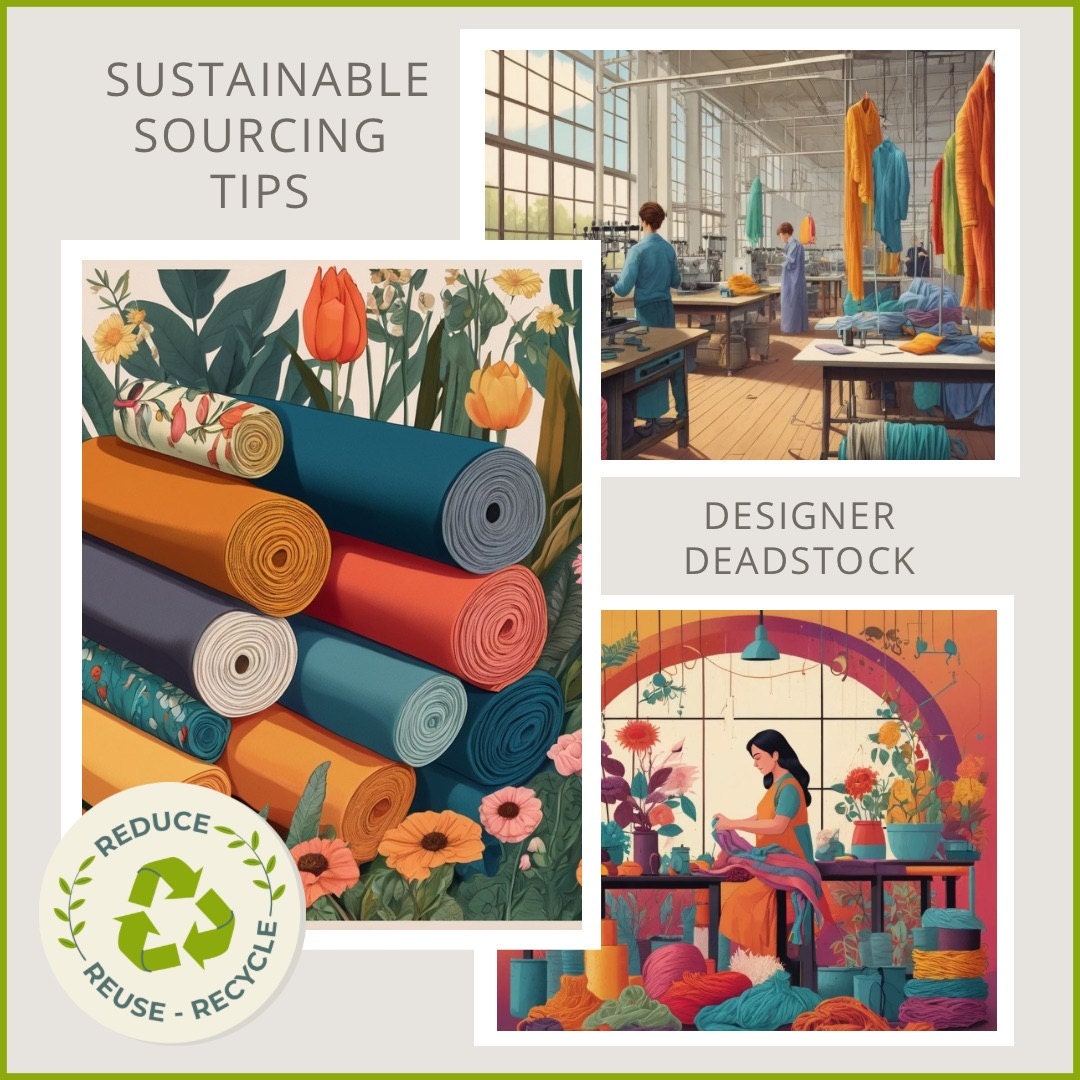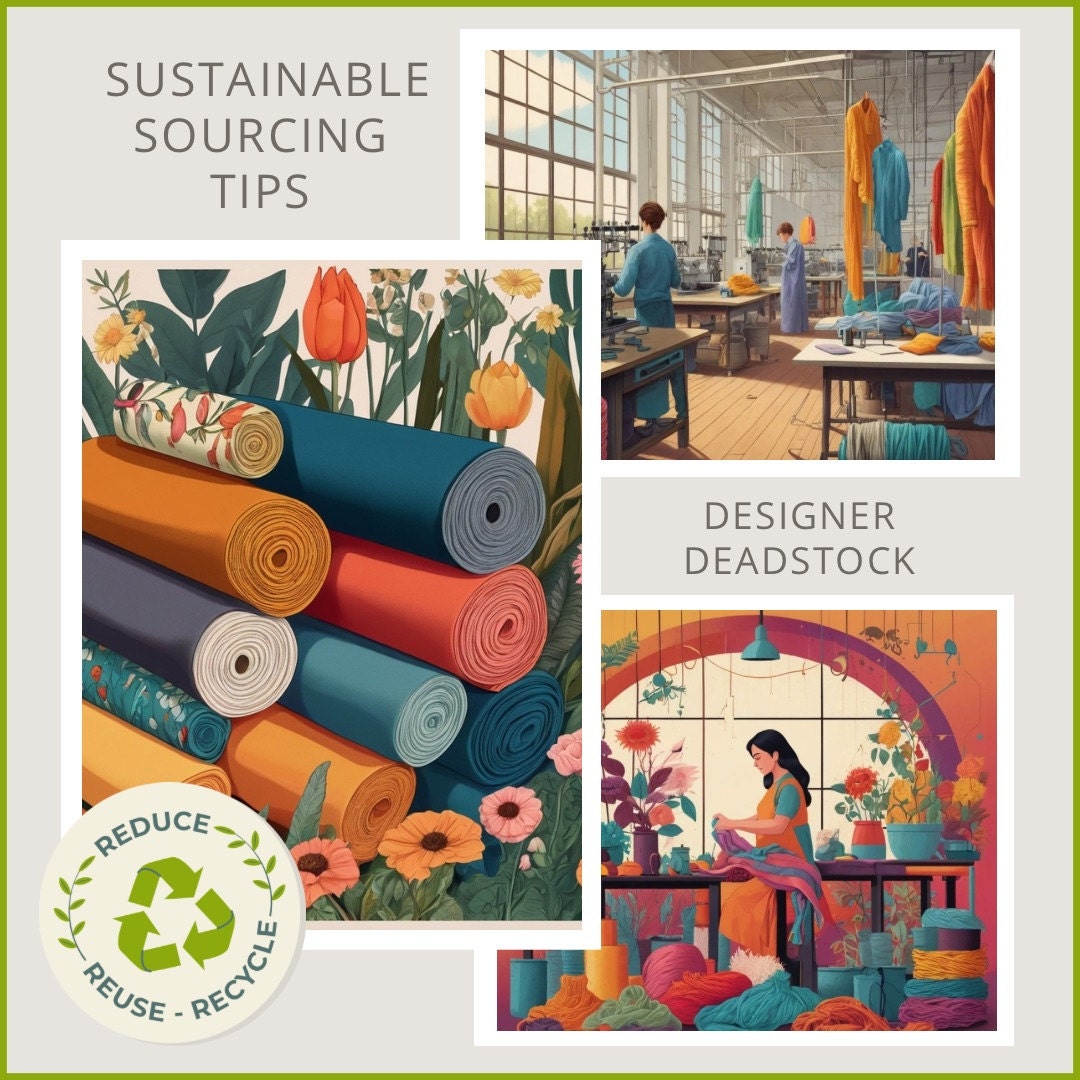
Deadstock Fabrics: Fashion’s Hidden Treasure
In the world of sustainable fashion, deadstock fabrics have become an invaluable resource for designers and small businesses looking to create eco-friendly, one-of-a-kind pieces. These surplus textiles, often discarded by large manufacturers, represent a second chance for high-quality materials that might otherwise end up in landfills.
But what exactly is deadstock fabric, and why has it gained so much attention in sustainable fashion? Let’s take a closer look.
What Are Deadstock Fabrics?
Deadstock fabrics are leftover textiles from fashion brands, mills, or manufacturers that were either overproduced, misprinted, or unused due to slight imperfections, canceled orders, or discontinued styles. Instead of being discarded, these materials are sold at discounted prices, giving them a new life in the hands of small designers, sustainable brands, and independent creators.
For years, deadstock fabric was considered “waste” by big fashion houses, but now it’s recognized as a goldmine for sustainability and creativity. By repurposing these textiles, designers can reduce demand for new fabric production and minimize fashion’s overall environmental footprint.
A Brief History of Deadstock Fabrics
The use of surplus materials in fashion isn’t new. During wartime rationing in the 1940s, designers repurposed deadstock fabrics due to shortages of raw materials. In the 1990s and early 2000s, up-and-coming designers began using deadstock as an affordable way to access high-end textiles.
More recently, with the rise of sustainable fashion, deadstock has become a conscious design choice rather than a necessity. Brands and independent designers alike now seek out deadstock as part of their commitment to zero-waste production and responsible sourcing.
Even mainstream fashion has embraced it—Project Runway contestants have sourced deadstock fabric from Mood Fabrics in New York, a well-known supplier offering high-quality surplus textiles to designers at all levels.
How to Source Deadstock Fabrics
Finding deadstock fabrics has never been easier, thanks to a growing number of suppliers catering to sustainable designers. A quick search on any search engine for ‘Deadstock Fabrics’, ‘Designer Deadstock Fabrics’, ‘Manufacturer Deadstock Fabrics’ should generate lots of possibilities. Be sure to inquire about full available yardage and purchase all you may need for any given project as these fabrics are limited in availability. This is a great time to have done your tech packs and know exactly what you need. With proper planning, working with deadstock fabric is a great way to turn one Brand's waste into your treasure!
Here are some sources ( There are so many):
1. Mood Fabrics (New York, NY) A legendary supplier in NYC’s Garment District, Mood Fabrics has been used by Project Runway designers for its Deadstock Collection, which features high-end surplus fabrics at discounted prices.
• Website: https://www.moodfabrics.com/
• Contact: info@moodfabrics.com
2. Aloqia (Formerly Queen of Raw) An online marketplace for deadstock, overstock, and excess textiles, Aloqia connects designers with sustainable fabric options worldwide.
• Website: https://www.aloqia.com/
• Contact: support@aloqia.com
3. FABSCRAP (New York & Philadelphia) A non-profit that rescues textile waste from fashion brands and makes it available to designers, crafters, and students for purchase at affordable prices.
• Website: https://www.fabscrap.org/
• Contact: info@fabscrap.org
4. Recovo A circular fashion platform selling deadstock fabrics from overstock and canceled orders to promote responsible material reuse.
• Website: https://www.recovo.co/
• Contact: hello@recovo.co
The Benefits of Deadstock for Small Businesses
For independent designers and small brands, deadstock fabric provides several advantages:
✅ Lower Costs – High-quality fabrics are available at reduced prices compared to ordering custom-woven textiles.
🌱 Eco-Friendly Choice – Using deadstock prevents fabric waste and reduces the need for new textile production, lowering carbon emissions and water usage.
🛠️ Unique Designs – Deadstock collections often include limited-run fabrics, ensuring exclusivity and one-of-a-kind pieces.
⚡ Fast Turnaround – Unlike custom orders, deadstock is available immediately, allowing for quick production and limited-edition drops.
Deadstock fabrics allow small brands to create with sustainability in mind while staying competitive in a fast-changing industry.
Deadstock fabrics are more than just a sustainable alternative—they are a powerful way for designers to rethink fashion’s future. By giving existing textiles a second life, we create a more circular, responsible, and innovative fashion industry.
Are you ready to explore deadstock fabrics for your next collection? Let’s start designing a fashion industry that values creativity and sustainability equally.
Bonus Pro tip:
Find out if your city has a fashion district and go have fun sifting through rolls of fabric. Better yet, plan a trip to a city that does! Take your creativity on an adventure! Bring a sketch book. Make a day of it or a weekend! Do a little in person bartering ( Used to be my favorite part of my trips to LA Fashion District. This little Lady can haggle. 😆 ). You can find deals on Deadstock and End Cuts, plus so much more. Zippers, buttons, crazy notions of all types live in the depths of your local fabric vendors' stores. Try not to get lost. Definitely bring a friend who has self control. It can get hectic without a budget so plan ahead.
Get out in the world and check it out when you can. Be inspired. Building personal relationships with your purveyors is key to consistantly finding exactly what you see in your minds eye. When you help them stay in business they will do the same for you. Be generous with sharing their information with others. When we support those that support us, we all win!
Happy Hunting, Crafty Friends. I hope you find all the amazing fabrics that make your heart and your creations sing!
Happy Sourcing!
Vichelle
Works Cited:
Boucher, Julien, and Damien Friot. Primary Microplastics in the Oceans: A Global Evaluation of Sources. IUCN, 2017, https://portals.iucn.org/library/node/46622.
Ellen MacArthur Foundation. A New Textiles Economy: Redesigning Fashion’s Future. 2017, https://www.ellenmacarthurfoundation.org/publications/a-new-textiles-economy-redesigning-fashions-future.
Kant, Rita. “Textile Dyeing Industry: An Environmental Hazard.” Natural Science, vol. 4, no. 1, 2012, pp. 22-26, doi:10.4236/ns.2012.41004.
Mood Fabrics. Deadstock Collection. https://www.moodfabrics.com/. Accessed March 2025.
Aloqia. Sustainable Fabric Marketplace. https://www.aloqia.com/. Accessed March 2025. Recovo.
Circular Fashion Fabrics. https://www.recovo.co/. Accessed March 2025.
